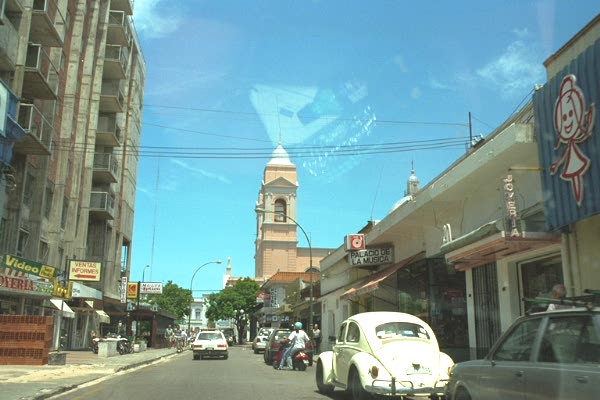
Uruguay RPCV Michael Bell is Nature Conservancy's local director
A profile of Michael Bell, Nature Conservancy's local director
Central Coast project director loves the challenge and rewards of a job that preserves some of the area's pristine resources
David Sneed
The Tribune
SAN SIMEON - When Michael Bell took over as the Nature Conservancy's Central Coast project director a year ago, he found himself at ground zero of land conservation in the state.
Positioned halfway between the Los Angeles and San Francisco metropolitan areas and blessed with scenic grandeur and a temperate climate, San Luis Obispo County has been the focus of some of the most intense development pressures anywhere in the state in recent years.
"The most dangerous part of this place is that people want to come here and live," Bell said.
But it's not just intense development pressure that has made San Luis Obispo a focal point of preservation. It's also the fact that the county still has large, undeveloped landscapes worthy of preservation.
It was this challenge, in part, that motivated the 31-year-old Bell to leave another job with the Nature Conservancy in New Jersey and move to San Luis Obispo last July. Another motivation was the opportunity to work on large-scale conservation deals.
Back in New Jersey, the focus of Bell's conservation efforts was the Pine Barrens, a largely undeveloped, million-acre pine forest in the south-central part of the state.
"Eighty acres is typical in New Jersey, compared to 5,000 acres here," he said.
Conservation of large, intact natural ecosystems is what the Nature Conservancy is all about. Bell hopes his office will soon be able to announce completed deals in the Monterey pine forests of Cambria, the Irish Hills west of San Luis Obispo and on the Chimineas Ranch west of the Carrizo Plain.
Back in 1999, the group made a big splash when it announced that, flush with $175 million from the Packard Foundation, it was launching a major initiative to conserve big chunks of the Central Coast and other parts of California.
The initiative lead to important preservation deals in the Carrizo Plain, Cambria, Guadalupe Dunes and San Luis Obispo. The group also had its share of setbacks, failing to close deals to conserve the Hearst Ranch and a 2,400-acre ranch at Avila Beach.
A lot has changed since the heady days of 1999 that make the work of a professional conservationist more challenging, Bell said.
Other conservation groups, such as the American Land Conservancy (which is negotiating a deal for Hearst Ranch), have become active in the county. And sponsorship from the Packard Foundation and other private groups all but dried up with the downturn in the stock market.
This means that Bell must find creative new ways to protect landscapes from development. Most importantly, conservationists must cooperate with landowners, government agencies and other environmental groups.
"Partnerships are the only way to get deals done," he said. "People with a lot of different interests have to come together."
Bell also said he will need to use conservation easements more often. In these cases, property owners retain ownership of the land but sell their development rights. Easements are cheaper and help keep farmers on their land but can be unpopular with the public, which often wants to see outright purchases for their money.
The group is also working on ways to keep cattle grazing -- an important part of the county's economy. Ranchland is habitat for many species of wildlife.
"The best land stewards we have are ranchers," he said. "Somehow, we have to find a way to keep ranches viable."
Bell settled in conservation work after an eclectic youth. He studied biology in New Hampshire and served in the Peace Corps in Uruguay. He also held jobs as a ski instructor and local television producer.
His most immediate personal goal is to buy a house. In his free time, Bell is an avid surfer and recreational runner.
